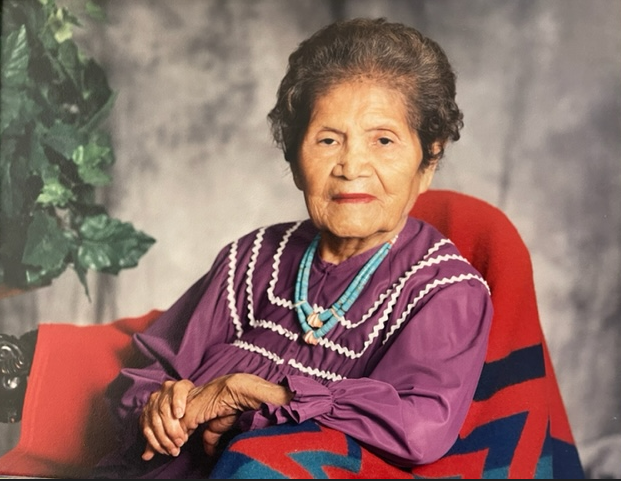Molly Fasthorse’s tombstone reads, “She walked in beauty,” a statement representing a woman immensely proud of her Tolkopya Yavapai heritage and dedicated to the education and literacy of Indigenous/Native children, in order to thrive in the larger world.
Molly was a product of the “Indian School” model of cultural suppression and was trained to be a domestic, eventually employed by several prominent families in California. During World War II Molly worked for an aircraft company and afterwards, the Salvation Army where her experience dealing with underrepresented communities greatly affected her attitude towards higher education. While there, Molly volunteered at UCLA and was part of a linguistic study in which she provided hours of recordings of her Yavapai dialect, helping linguistics students document Yavapai grammar, semantics and culture with her translations of traditional stories. This opportunity piqued her interest in preserving the language and led her on a pathway focused upon helping students from Yavapai tribes pursue higher education, feeling it was a means for students to move forward in their communities and society and to protect the Tribes.
Upon retirement Molly moved back to Fort McDowell, Arizona where she spent her later years visiting with her sisters. Molly is remembered for her patience, diligence and the magical connection she had with her community and her students, helping them to “hanik myami” (walk in beauty).
